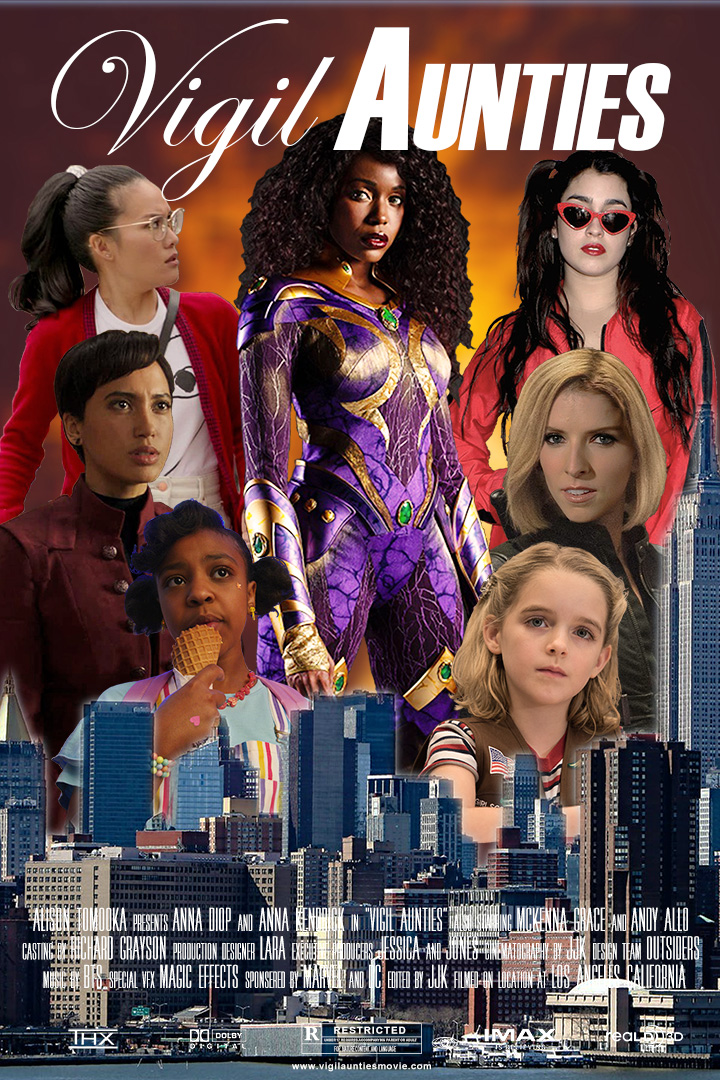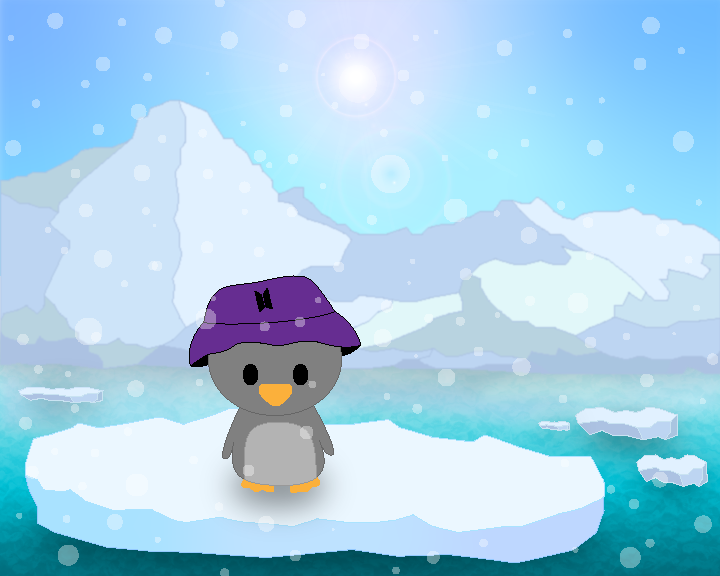Learning Adobe in ART 112
In my final semester, I took ART 112: Introduction to Digital Art. This was a studio class, introducting a variety of applications for producing digital, visual art.
The first focus of the course was on Adobe Photoshop. At the moment of writing this, it is the program I have become the most familiar with. That said, it does come with a learning curve and I am still aquiring new skills and more efficient means of using the application.
For the initial project, we needed to develop a movie concept to support our creation of a movie poster. My idea for the movie was a female-led, superhero, action film. Utilizing images of celebrities I am familiar with and the common arrangement of people seen in other action movie posters, I put together my final submission.

While working on the movie poster, I experienced a lot of difficulties with adjusting for lighting and creating different levels of depth within the image. Notably, the end result of this first project was a bit “flat”, as the feedback from my professor expressed. The movie poster looks exactly like a series of cut-out images stacked upon each other, rather than having a more blended appearance.
The feedback pushed me to complete an extra-credit assignment, to further practice my Photoshop skills.

With the extra-credit movie poster, I approached a different genre of film concept, something more centric to coming-of-age. Utilizing the idea of a smaller class, I was able to focus more of my efforts toward how everything came together in the final product. Aiming for the effect of a Polaroid, I spent time to layer the cherry blossoms at the foreground and give a more realistic appearance to the two men in the train station.
Overall, the experience with Photoshop taught me about the idea of placing quality over quantity.
When working with Illustrator, the transition of many skills carried over from Photoshop. A nice benefit of working with applications produced by the same company. This made the new program easier to get started on, but with Illustrator focusing on illustrations, there were many more skills to learn, like the Pen Tool.
Starting with hand-drawn art, we need to create a character to feature in our Illustrator project. My favorite animal is a penguin and, thus, my character was a cartoon-ish penguin with a bucket hat.

From the paper-and-pen drawing, I needed to scan the file and layer it under the first layer of the Illustrator file. This allowed me the ability to trace the character I created onto Illustrator utilizing the Pen Tool. Learning to adjust for the correct curves and closing shapes were definitely some of the more difficult skills to learn. On the other hand, the Gradient tool for creating unique color-combos, was a fun and easy tool to learn–especially as the results were easy to see and compare.

Of all the projects for the course, I do find myself most proud of the Illustrator project. I think many of the skills regarding depth, layers, and coloring, came together to create a final piece with movement and expression. Feedback included the lack of detail in the character compared to the iceberg in the background of the image. I acknowledge that the foreground of the art could use more detail and attention to create a more synergized piece, however I also found that the realism the details to the iceberg give to background help to create a contrast that ultimately drives attention to the character, who is the subject of the overall art. Additionally, it emphasizes the cartoon-effect I was striving for with the character design.
All in all, the Illustrator project and ART 112, introduced me to different skills and aesthetic criteria. There was perseverance required to approach the many different photos to outline in order to remove from their original background and place into the movie posters, as well as in adjusting colors and lighting to create well-blended final products. The projects also required an open-mind in receiving feedback from the professor and to approach the projects with the thought that there is continuous room for growth.